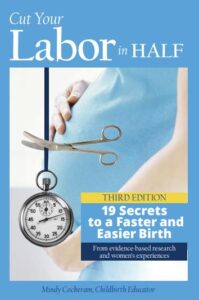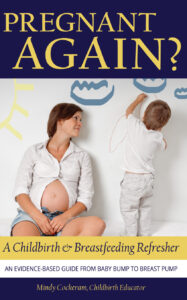.
Private Childbirth & Breastfeeding Education
Providing private in-person and virtual Childbirth & Breastfeeding Classes for a positive birth experience. Click Private Class Enquiry for more information.
Dark Covid Clouds……Silver Maternal Linings?
It’s not easy to deal with the stress of pregnancy, labor and the postnatal period during the best of times but for most, Covid-19 has severely compounded the struggle. The cancellation of many in-person prenatal visits and childbirth and breastfeeding classes and the lack of firm knowledge of how Covid-19 could affect mothers and babies have stressed many women to the breaking point. The UK newspaper The Independent found that telephone support services have experienced a huge rise in calls: Birthrights (a maternity care charity) enquiries were up by 464% in comparison to March last year; baby charity Tommy’s experienced a 71% surge in calls for advice from midwives on its pregnancy helpline in April and a spokesperson for the charity Maternity Action said they have been “swamped by calls from distressed pregnant women” questioning covid-19 safety in the workplace.
In L&D, practitioners are noting an uptick in premature deliveries, lower weight newborns and an increase in babies admitted to the NICU and put on ventilators. Women are worried about testing positive for COVID-19, being separated from their babies if they do test positive and new policies limiting the number of birth supporters (including doulas) allowed in the delivery room or NICU after rapid testing. Then there are the mental health struggles with isolation, lack of family support after birth and perinatal mood disorders during stay at home and social distancing orders with a newborn. Some women fear that if they cannot or choose not to breastfeed, they may struggle to obtain formula due to panic buying and hoarding if there is a 2nd surge. And the list goes on.
Is there anything good to come out of a disaster? When talking about birth interventions in both my classes and in my book, I always refer to the story of Hurricane Charlie recounted in Jennifer Block’s book Pushed: The Painful Truth about Childbirth and Modern Maternity Care (2008). In it, she highlights the true story of a Florida hospital whose power got knocked out for seven days by Hurricane Charlie. Because of the lack of power, the maternity staff had to change their practices. They couldn’t offer induction or epidurals and only accepted women who were in active, established labor. One of the labor nurses started noticing changes:
“What happened was, women were going into labor all on their own, having good labor courses, and delivering healthy babies. Even the women who were scheduled to be induced that week, three-quarters of them came in and delivered anyway. And basically, they did better than if they had been induced. We thought, wow, this is amazing!” Excluding repeat C-Sections, the hospital’s C-Section rate that week dropped to 6%.
Could the changes brought on by Covid-19 actually have silver linings?
I have canvassed over one hundred birth workers for input. One of their first observations is that women are coming into triage for non-labor issues far less. The fear surrounding contracting Covid-19 in a hospital is keeping women from coming in ‘just in case’ and issues are being discussed virtually with care providers and birth supporters instead of rushing into triage. While this could be detrimental in some situations, it is increasing the ratio of nursing staff to laboring women. Nurses that are freed up to help support labor have the potential to change patient outcomes. (Edmonds, Jones, 2013).
The policies restricting the number of (non-doula) birth supporters may also have implications. A midwife who commented on my post noted that “we have had a lot of clients leave our practice and opt for home birth or birth center birth options to avoid the additional restrictions placed at the hospital”. Several nurses also noted that the sole support partner tends to be more focused – knowing that he/she cannot be swapped out nor complemented by a doula or other non-staff birth supporter. An L&D nurse commented:
“I have noticed the significant other is more involved at the bedside helping mama to the bathroom, fixing her in the bed, fetching a cool rag – all things her mother or mother-in-law used to do! Also, I’ve seen more people videoing the birth or on FaceTime with the family and boy are they so quiet watching! Our policy is usually no video”.
Women are less distracted by family or friends who may unintentionally slow labor progress by stressing or distracting the mother and reducing oxytocin production. As one nurse stated:
“Labor is not a spectator sport. Many (visitors) are loud, on the phone, hungry and walk in and out all shift. Now it’s just the support person and you have a much nicer delivery. The patient gets all the focus – as it should be”.
Another observation is that inductions are not taking as long. As one nurse put it:
“I’ve noticed inductions going into labor and delivering much faster. We have Foley bulb inductions all the time that can last up to 48 hours before they get to second stage, and I haven’t had a single one last more than 24 hours since the visitor (policy) change. These mommas are likely able to make more endogenous oxytocin when they don’t have 15 people in the room staring at them”.
Other nurses have mentioned that women are being admitted deeper into labor with higher dilation leading to faster overall labors.
In the first few hours after birth, staff is noticing an increase in skin to skin bonding as the baby is not being passed around. Parents also feel less inhibited to ask questions in the absence of family. “ I find my first time moms and dads in particular are asking more questions regarding their baby and their care and are initiating more education sessions when their attention isn’t being split between learning and having to entertain well-meaning friends and family” mentioned a nurse in Georgia.
In the postpartum unit, every nurse I heard from has mentioned less formula supplementation, higher exclusive breastfeeding rates and less weight loss at discharge. With no visitors to keep the mother awake, mothers are napping more, less exhausted and don’t feel publicly defeated if the baby won’t stop feeding or won’t sleep. New mothers are particularly keen to breastfeeding in the current climate in order to pass through antibodies to their babies. Many couples have been honest in admitting that “they enjoyed this labor more because they had no family around” said a postpartum nurse. Hospitals are also seeing increased patient satisfaction scores.
Finally, Lamaze educators and Doulas have responded quickly to the demand for virtual classes, information and support. The new skills that Educators are learning during Covid-19 may help develop a hybrid model of education that can reach families excluded from education by physical distance. Finally, doulas are turning to a virtual support models: “Via the screen, the doula can suggest different positions for the birthing parent or walk them through a breathing technique. And, a bonus—the partner can also channel their inner Secret Service agent if they want; we really like to have the non-birthing parent have an earbud in the ear so we can whisper suggestions,” says Sarah Paksima, of DC Birth Doulas.
In India, The Union Ministry of Health and Family Welfare reported a 46% drop in C-Sections in March 2020 versus March 2019. They also reported a 43% drop in institutional (hospitals) births over the same time frame in a country with an alarmingly inequality in access to maternal healthcare. We have yet to see the statistics for mortality and morbidity in the same time period.
It has been seemingly impossible to extract current 2020 comparison statistics from the five American hospitals I contacted. When the evidence is finally published, will it back up the anecdotal observations? What has been your experience? Have you been privy to comparison statistics before and during the Covid-19 outbreak at the hospital or birth center where your clients or patients birth? What trends, commonalities or anomalies are you noticing? What has been the silver lining in maternity care in your catchment?
About Mindy Cockeram
Mindy Cockeram is a guest contributor for Connecting the Dots and a certified Lamaze Educator teaching for a large hospital in Southern California since 2011. She initially trained with the United Kingdom’s National Childbirth Trust (NCT), teaching both private classes and for the National Health Service at St Georges Hospital, Tooting. She graduated from Villanova University in 1986 with a bachelor’s degree in Communications and a minor in Business Studies. She is also the author of childbirth articles and two books: Breastfeeding Doesn’t Have to Suck: Tips, Tricks and Knowledge for a Great Experience and Cut Your Labor in Half: 19 Secrets to a Faster and Easier Labor.
REFERENCES:
Dutta, Sumi Sukanaya (2020). Even C-Sections have fallen! How Covid-19 is hitting childbirths too. www.newindianexpress.com. Accessed May 2020.
Edmonds, JK, Jones, EJ. (2013), Intrapartum Nurses’ Perceived Influence on Delivery Mode Decisions and Outcomes. Journal of Obstetric, Gynecologic, & Neonatal Nursing, 42: 3’11. doi: 10.1111/j.1552-6909.2012.01422.x
Institut de Recherche pour le Développement (2019). Cesarean deliveries in India: Too many and yet too few. https://medicalxpress.com. Accessed May 2020.
Kim, Jasmine (2020). Second-trimester miscarriage attributed to a coronavirus infection of placenta. Accessed May 2020
Montgomery, Mimi (2020) Hospitals Are Limiting Visitors During Childbirth. So Doulas Are Now FaceTiming Into Delivery Rooms. https://www.washingtonian.com. Accessed May 2020.
Muza, Sharon (2020) Connecting the Dots, Brilliant Activities for Birth Educators – Three Ideas for Virtual Childbirth Class Activities. www.Lamaze.org. Accessed May, 2020
Oppenheim, Maya (2020) Pregnancy support helplines report dramatic spike in urgent enquiries as coronavirus turmoil puts mothers at risk. www.independent.co.uk. Accessed May 2020.
Click to explore


Viel Glück in Ihrem Blog, wie ich weiterhin regelmäßig zu folgen. Nanine Kimble Benedikt